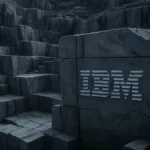The Great Pacific Garbage Patch is a silent yet powerful reminder that human wastefulness is killing our planet.
Swirling midway between California and Hawaii, this vortex of ocean pollution has been growing bigger every year, while the discarded plastic that comprises it slowly breaks down into microscopic death pills for fish and birds.

Looking at a picture of the Great Pacific Garbage Patch gives one the urge to fashion a huge pool skimmer, hire a boat, and lift all that trash right out of the ocean. Apparently it’s not that easy, and even if you could skim it all out, there’s no way to keep another patch from forming. That’s why a team of Serbian architects devices a series of underwater skyscrapers that could be placed in the gyre, ready to collect all the trash and convert it into energy.
From the water’s surface, the Lady Landfill Skyscraper looks like a funky moss-covered iceberg. Just like it’s frosty counterparts, it stretches far deeper into the water than you might imagine. But instead of posing a threat to passing ships, the long stems of these underwater towers would remove and recycle floating garbage.

According to the designers, these self-sustaining structures would have four communication cores that connect three main levels – garbage collectors at the bottom, recycling plant in the middle levels, and housing and recreational levels atop.
”Because most of the molecules found in the garbage have high energy, the waste will be heated in the recycling chamber and converted into a gas that will be stored in massive battery like structures,” they explain.
With over 3.5 million tons of trash currently floating around in the Great Pacific Garbage Patch (and there are several more like it in oceans around the world), it’s hard to deny that this could be a major source of energy. Getting the energy from the structures to the mainland is another story, of course. Still, the design shows promise, and was an Honorable Mention in the 2011 eVolo Skyscraper Competition.






